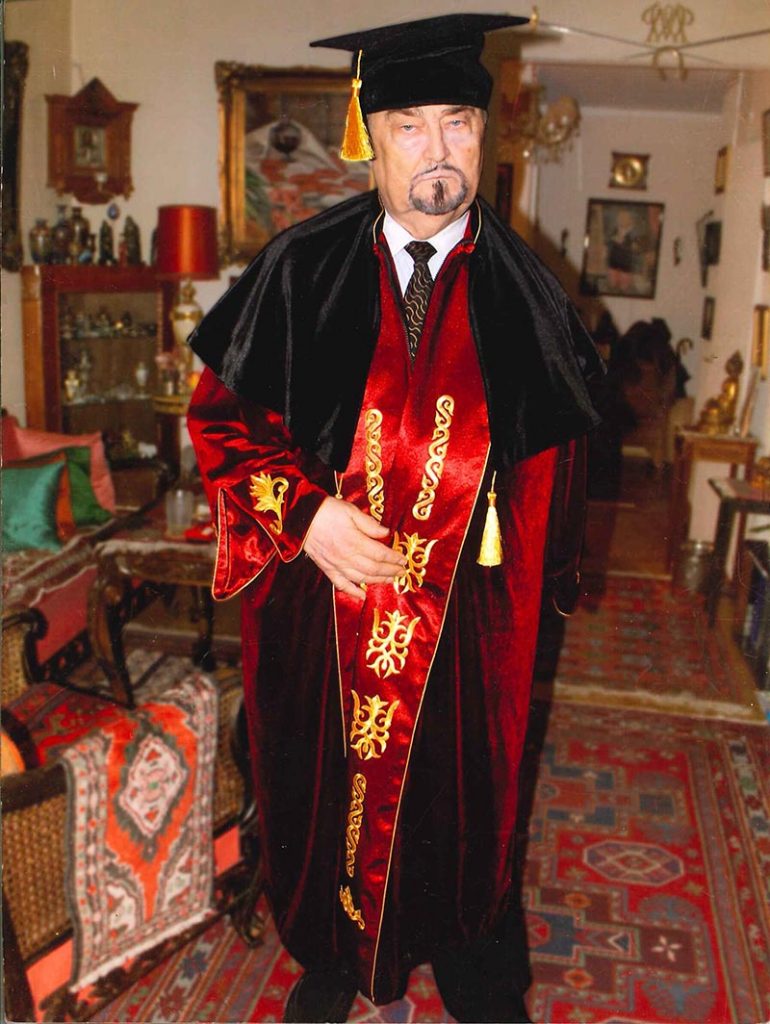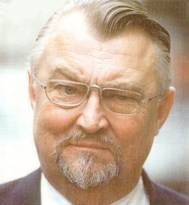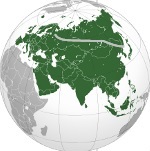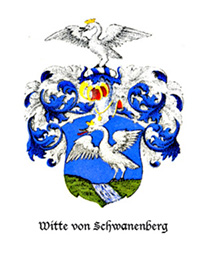AIRLINE BARON VON WITTE
CURRICULUM VITAE
Baron Vladimir von Witte
- 1945-1954 Went to Swedish-speaking school in Helsinki
- 1958 Joined Finnair
- 1958-1959 Traffic Officer at Helsinki airport
- 1959-1965 Radio and telephone operator in Finnair’s Aircrafts. Operating to Leningrad and Moscow
- 1965-1968 Station Manager at Moscow airport
- 1968-1970 District Manager in Leningrad – Opening of Finnair Town Office in Leningrad
- 1970-1978 General Manager in Moscow
- 1978-1980 Director of Sales at Hotel Intercontinental in Helsinki
- 1980-1984 General Manager in Iraq, Jordan, Libanon and Syria
- 1984-1986 Product Manager in the Head Office
- 1985-1991 Director of Eastern European countries in travel agency United Travel
- 1992-1994 District Manager of Finnair in Saint-Petersburg
- 1994-1999 General Manager of Finnair in Moscow
Achievements
- GOLD TO GREAT BRITAIN 1961
- CAVIAR TO U.S.A 1973
- FINNAIR FLIGHT PERMITS THROUGH SOVIET TERRITORY 1976 and NON-STOP FLYOVER PERMITS 1982
- FINNAIR FLIGHT PERMITS TO MÜNICH IN 1987
Associations
- Established by Vladimir von Witte the PPL year 2003, Chairman of the board 2003-2008
- Chairman of the board 2006-2007 The Finland and Jordan Association
- Father Baltic German and mother – Russian-Finnish
- Languages: Finnish, Swedish, Russian, English and German
- Married and has three daughters.


In the 1960’s relations between east and west were strained. The cold war made free direct contacts between people and organizations from the opposing side virtually impossible and “influential friends” were often asked to raise inquiries. Mr. Vladimir von Witte, fluent in Russian, and due to his position in bilateral cooperation in transportation, often had responsibility fall on his shoulders and subsequently, became the ideal man to turn to, mediation was needed “Behind the Iron Curtain”.
BARON VON WITTE - “The man for extraordinary jobs”
Gold to Great Britain in 1961
The USSR government and General Secretary of the Politburo, Mr. Nikita Hrutsev wanted to raise the value of the Soviet currency the Ruble to an international level. The Ruble was a “closed” currency thus not freely traded – and its value was low. Prime minister Andrei Kosygin suggested that the Ruble be tied to the USSR’s gold reserves to improve the worth. This proposition was accepted and subsequently, it was decided that at least a ton and a half of gold would be sent to the Central Bank of London, England.
I believe, this operation was probably designed by the KGB, the Soviet secret police, and reported directly to General Secretary Hrutsev – the head of the USSR.
The plan included the help of a neutral and friendly neighboring country Finland and its highly trustworthy airline, Finnair. And so, the arrangements started.
In Helsinki, I was called to Station Manager Vuorimaa at Finnair to hear details of the plan and receive instructions. I would be personally responsible for overseeing and the success of transferring the gold “from behind the iron curtain”, from Moscow to Helsinki, and the passing of the baton to another trustee who would oversee the transfer from Helsinki to London. Whether by deliberate choice or chance, but curious none the less, the responsibility of this mission was bestowed on me, a relative of Count Sergei Witte, who had been the Prime Minister of Russia. He, almost a century before, had placed Russia on the gold standard and made the Ruble a convertible currency for the first time in the Russian history.
I accepted the task and made the arrangements for the valuable cargo to be received and loaded to the planes. I was personally present when the bullion was loaded into the Finnair plane. The gold was driven to the airport in an armored van. It was packed in wooden boxes of 57 kg each. Because of the weight restrictions, I decided that the gold would be flown out on 2 sets of flights. First half on one flight and the second batch on the next regular flight to Helsinki. The decision was based on my experience on flight cargo restrictions attained from my earlier years as Finnair’s traffic officer and defining the weight and balance of planes to ensure a safe lift-off.
The loading of the boxes was closely followed by armed guards and obviously I was overseeing personally all the steps as well. Being nervous, one of the loaders lost his hold of a box. It fell on the ground and broke revealing its valuable contents. A commotion followed – the loaders were mesmerized by what they saw and the guards raised their weapons ready to shoot. I managed to calm the situation and the loading continued. The damaged box would be fixed and it would follow on the second flight. Once the gold was on board, the passengers were checked in and the plane left for Helsinki. I onboarded the flight to ensure the handover of the responsibility at the Helsinki end. Looking out from the airplane window I could see that a MIG-15 fighter plane followed the flight and did not turn back until we crossed the into Finnish airspace. Four days later, I personally supervised the loading of the remaining gold bullion and again with my presence ensured the safe arrival of the second batch. Once at Helsinki airport, I handed over to the person selected for the second part of the gold’s journey to London. Operation “Gold to UK” on von Witte’s part was successfully accomplished.
CAVIAR TO U.S.A 1973
Mr. von Witte was contacted by the legendary Time Magazine editor Mr Edmund Stevens. Mr. Stevens had been a representative for his paper in Moscow as early as 1935. He told Mr. von Witte that he had heard from others that he had good relations and connections with the USSR, and Edmund was inquiring if Mr. von Witte could help him acquire some caviar to interested people in the States.
As Mr. Stevens got in touch, I told him I was flattered but said that “no middlemen would be needed as it was only a matter of money.” But hearing the amount of caviar that was desired, the black gold of Siberia, and by an American, I understood the need of a mediator. A thousand kilos were a gigantic amount that would not be found easily, especially to an American.
I promised to help as a thought had risen to my mind. Such a huge amount could not be bought in Moscow but in Lenfintorg – an organization in Lendingrad created for the cross-border trade between the USSR and internationals. They just might be able to supply it and the deal would also be very profitable for Finnair responsible for the freight, as the company would be able to charge for the caviar transport an astronomical fee of (300%) in comparison to the normal freight charge.
I flew to Leningrad for a friendly visit to the Lenfintorg. I began by praising the good trade relations between the two countries. Having done this before, the Lefintog’s head of operations Mr. Glatkov commented to this, “Dear Mr Vladimir, you have come here now a few times to express joy of the good relations between our two countries. It is a pleasure always to exchange pleasantries and drink good cognac, but the truth of the matter is that you never seem to want to buy anything. Now, how many bottles must we drink?” I said that I understood the point and assured this time my visit had more purpose, and then asked to buy a thousand kilos of black caviar?
There was a long silence. Mr. Glatkov asked me slowly “have you drank some alcohol in the morning?” I said that I was quite serious.
The request caused great confusion at Lenfintorg and an internal meeting was called to discuss the deal that would require the whole annual Lenfintorg quota of caviar allocated to annual distribution. But eventually supply and prices were fixed, an American cheque in American dollars was prepared for the exchange and thus the deal could be closed immediately. The agreement included an 80.000-dollar cheque, which was handed over to the Lenfintorg. At that time those numbers in dollars were exceptional. The caviar was delivered and flown from Leningrad to New York via Helsinki. Mission caviar to the U.S accomplished!
But the story doesn’t totally end there. This huge deal left the Russian international Caviar supply very low and after some time unhappy voices started to inquire, how was it possible that a huge amount of caviar had gone to just one buyer, especially when the average need of that party before had been maybe 10 to 15 kg? As the details of the story started to seep into private conversations, complaining reached the ears of the Russian Trade Minister, about Finnish companies moaning they couldn’t get their share of Caviar to sell. Lefingtorg was reprimanded for bad judgement, until Leningrad’s Communist Party’s First Secretary, Tolstikov put an end to it. A loyal supporter of his City, he drew a hard line with Moscow officials, articulating that Moscow had sucked all the international currency from Leningrad, and having left the city in such dire situation, any rebuking was groundless! At the end no action wasn’t taken over the affair, but an advisory was put out to Lefingtorg “Please, with Mr. Vladimir, let him praise our good relations, but let’s keep trade out of the relationship”.
SIBERIAN RAILROAD IN THE 1970’s
Back in the 1970’s the government of the Soviet Union inquired if I would be interested in representing and marketing the Trans-Siberian railroad. They were well aware of my relevance, and of the man behind the original Trans-Siberian project having been from my bloodline, Finance Minister Sergei Witte. The person who delivered me this request was a Russian born Viktor Louise, a journalist representing a British newspaper in the USSR but also an active messenger of the Soviet government.
At that time my life was far too busy to consider such an undertaking, however interesting. But lately my thoughts have revisited those conversations especially after the difficulties caused to the international air traffic by the volcanic ash from Iceland. It would have been a great venture. Imagine a state-of-the-art Trans-Siberian railroad. In my vision the railroad would begin in Central Europe, for example Berlin, run via Moscow and across Siberia to the Far East. The comfortable passenger trains would offer the occasional traveler un forgettable experience of beautiful scenery and those traveling in business a chance to acquaint themselves with the vast market potential of Siberia.
The original Trans-Siberian railroad was built from Moscow to Vladivostok in the 1880’s and was the first land connection between Europe and Asia. Finance Minister Witte’s aim was to connect these continents with a continuous railway network to further trade between them. The West would provide the East with technology, and raw materials would flow in turn to the fast-growing industrial economies of the West. Finance Minister von Witte believed that trade could only be promoted through transport cooperation between nations. I share his view and think there is still an enormous amount of room to improve in that region. My relative’s idea to create cooperation and collaboration through developing the Trans-Siberian railroad is unfinished and it is yet to live to its full potential.
General Manager in Moscow 1970-1978
THE FLIGHT PERMITS
The General Director of Finnair Gunnar Korhonen called me to Moscow and told that our company had plans to start flying to Bangkok once a week. Finnair was flying to Asia through the southern hemisphere. Due to quickly growing tourism a decision was made to raise the number of flights to Thailand. However, there was problem. The charter flights through the southern hemisphere were expensive. Yet, if there was a possibility to attain permission from the Soviet authorities to fly through more direct routes from Scandinavia over the Soviet Union territory, this would bring substantial advantage to Finnair and simply save time and money. At the time Nobody else had permissions to the optimal airways over the USSR and the Soviets had many regulatory limits on for any flyover routes. Airliners were using the longer southern hemisphere route.
I got instructions to start the negotiations with Aeroflot, and not surprisingly, “not make any compromises”. General Director Korhonen expected that the negotiations would be long and difficult, we were asking a totally new route not used by any foreigners before, so it was an exceptional position. Mr. Korhonen also informed me that “if and when the Soviets had decided how much payment they wanted for granting the permission to over flights”, he would personally make a trip to Moscow. I contacted the Soviet Ministry of Aviation and suggested to have a meeting with them. My request was received very business-like without any comments. The negotiations were scheduled for an upcoming morning and I took my Finnish employee with me. We were invited to a huge hall to conduct the negotiations. The dominant item in the room was a huge head of Lenin made of steel at the end of the hall. It made me think of the massiveness of the request we were asking.
In the consultation there were four Soviet Aviation generals and two navigation experts present. Myself, I was slightly uneasy in front of such experts and high-ranking negotiators. When I sat down in front of the generals, one of them asked “if Finnair was eager to take the last clients from Aeroflot with this new proposal” I explained as well as I could that the new route was tailored for a special target group. That it was for the people who had special interests in the Far Eastern cultures, yearning to make visits to that part of the world. Then I explained all what I knew about this route and ended my presentation by praising the good relations between our countries. After listening my sincere presentation, one of the Soviets leant over a close by control pad, pushing a button and a huge map suddenly appeared on the wall. I was given a stick to show on the map how our airlines intended to fly to the Far East over Soviet Union. Although, I had a fair idea of the route, I didn’t know the exact right location of the aviation beacons or navigation masts on the Soviet territory, as quite sincerely, I didn’t expect to get already to this point so fast. So, I showed the shortest route. This was followed a deep silence, which was broken by an expert, who told that it is not allowed to fly that way. Then the expert showed how the route could be used in reality. I agreed with him. The negotiations were over. The Soviet side asked few days to think it over. Quite unexpectedly one of the officials asked me, how was the health of my wife? Although nowadays, this is quite common for people to lightly enquire about your personal state, it seemed totally absurd to me at that occasion. I proceeded to respond that “she seemed ok at morning coffee”. The visit was over and we said good bye.
After two days, I received an answer from the Ministry, that our proposal was accepted. The route would be opened for us with a reasonable fee. We were only asked to take Soviet navigator because the navigation centers in the USSR had no personnel with English skills. This was to ensure efficient operation, as we hardly knew the direct route. But insofar as opening the route, there were no additional requests from the Soviet side.
I was so proud to inform the good news the General Director. Mr. Korhonen’s reaction to my surprise was very reserved because he thought that I had misunderstood something. He asked me if I had everything black and white? I told him that I don’t have it yet but we will get soon. I was little bit hurt of Mr. Korhonen’s disbelieve and contacted the Soviet Aviation Ministry telling “could the ministry send a clearance message hastily to Finland before they see an official document verifying our deal”. I was informed that the Ministry would send a note through the Foreign Ministry. The Finns received the note. In the winter 1976-1977 the Finnair, as the first western airline, started to explore the new flying route over the Soviet territory.
These negotiations lay important foundations to the non-stop flight permits to Japan, which I was also heading and reached a successful result in 1982. Both of these deals gave substantial advantage to Finnair and still, to this day, the non-stop route gives competitive edge to Finnair Asia operations.
FINNAIR FLIGHT PERMITS TO MÜNICH IN 1987
“The man for extraordinary jobs”

Finnair’s General Director Gunnar Korhonen and President Urho Kekkonen of Finland had a shared desire to obtain flight permissions to Münich in 1986. I had got to know this in several conversations with Mr. Korhonen. The greatest obstacle in the negotiations was Federal Chancellor Franz Joseph Strauss of Bavaria, who was also the Chairman of Lufthansa, the German airline’s Board of Directors, who did not want to share the profits from this route.
At the time I was the Head of Department in Matkayhtymä (United Travels), which was a subsidiary travel agency under Finnair. One day I received a telephone call from Mr. Tittman, a representative of GWKA, the German export-import company. In discussion Mr. Tittman told that me that he was aware that I was very appreciated by the Russians and he had heard intentions to reward me for my determined work in developing trade relations between Finland and the USSR. I never understood why Mr. Tittman had been picked to deliver the message. To my surprises, the dialogue included an invite to the German government’s Christmas party in 1986 hosted by Germany’s Federal Chancellor Strauss. Of course, it was a great honor. Taking into account my German roots, position in Finnair and trade efforts in general, I was of course a worthy participant to event. But considering the presence of Federal Chancellor Strauss and strong advice from Mr Tittman to pursue certain flight permissions, although I took the discussion with slight reservations, I thought it was a card that I should see.
The party itself was vibrant with different characters from political and business world. Unsurprisingly I also saw Mr. Victor Louise as part of the gentry. Amid the festivities serious business was taken care off, albeit diplomatically and with humorous flair. Federal Chancellor Strauss was a pilot himself and had a dream to fly and land his plane to Russia. After a few exchanged words he finally received a positive reply from the Soviets to his wish about making a state visit to the USSR and landing his plane, himself, into Moscow airport. As the nature of the discussion was about whish-lists, not to miss his opportunity and taking advantage of Mr. Strauss’s good humor, I raised the Finns wishes of flight permits to Münich? After a few pleasantries Federal Chancellor Strauss responded that he would grant the permit for once a week flight starting from March 1987. It was a great moment and I could hardly believe my ears! The route had been greatly coveted by Finnair. Chancellor Strauss continued that the agreement and technicalities could be taken care of the next time the Finnish delegate was visiting, but once a week flight permits were possible based on this discussion. Accompanied with gratitude, but learning from my past, I kindly asked the Chancellor to give me some reassurance that I could take with me. Looking beside him, he finally got support in the form of a business card from the City Mayor, where he signed his compliance for Finnair’s permits. The first flight to Munich flew in March 1987 and my mission “Flight permits to Münich” was accomplished.
The Finnish delegation took care of the formalities of the flight permits and when it came to evaluate the value of the signed business card by Chancellor Strauss some chose to depreciate it. In a closing meeting of the matter, including Prime Minister Harri Holkeri, also part of Fnniair’s managing board, Seppo Saarlund, Finnair’s PR and Communications Director, Kalle Temnes, Finnish Civil Aviation Director, myself and other delegates, some voiced that the credit wasn’t mine to take. But to my delight PM, Holkeri known of his directness quickly put an end to it. Looking with a sharp eye to the different parties he said “not you nor you got the flight permits for us, it’s von Witte who did it, just let’s get that straight here”.
